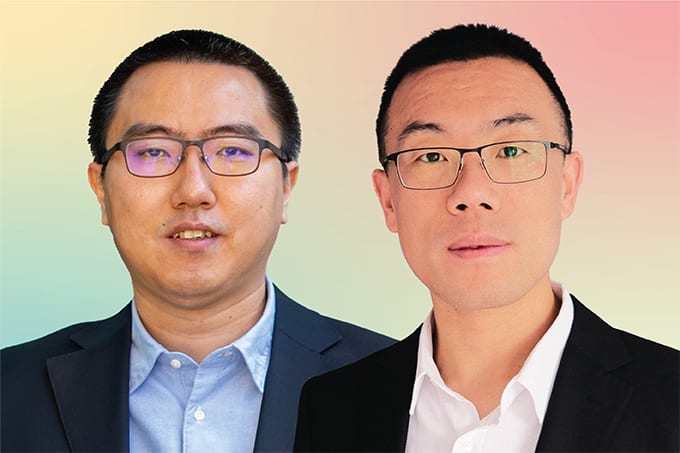
We’re looking forward to a week of insightful plenaries, practical sessions, and conversations that connect science, policy, and action. From pioneering research on POPs and PFAS to global efforts in sustainable chemicals management, this year’s program promises a rich mix of perspectives and progress.
Check out the week’s highlights below – and get ready for a voyage of discovery at Dioxin2025!
Program Highlights
Sunday (09:15–10:10 AM, Anatolia): Risk Assessment of Persistent Organic Pollutants: Does One Size Fit All? (Stephen Safe). Immediately following the opening ceremony, environmental toxicologist Stephen Safe examines how persistent organic pollutants impact human health via the aryl hydrocarbon receptor – and whether one-size-fits-all risk assessments hold up. Also on our radar: Huiling Liu’s 11:50 AM talk (Anatolia) on PFAS reference materials, a key challenge in accurate PFAS analysis.
Monday (9:00–9:45 AM, Anatolia): POPs and Chemicals of Concern in a Changing Arctic (Derek Muir). It’s hard to look past Monday’s plenary, where Derek Muir – renowned for his pioneering work on Arctic contaminants – will explore how climate change is reshaping the distribution and impact of POPs. Also worth catching: K.S. Krätschmer’s 10:30 AM (Anatolia) session on how food processing (pan frying, for example) affects PFAS levels, and Ron Hoogenboom’s 3:00 PM (Göbekli Tepe) talk on PFAS immune toxicity and relative potency factors.
Tuesday (09:00–09:45 AM, Anatolia): Science at the Crossroads of Policy: Advancing Global Action on POPs, Plastics, and Emerging Chemicals Through Monitoring, Research, and Multilateral Cooperation (Kei Ohno). A leading voice in global chemicals governance, Kei Ohno Woodall brings her analytical chemistry background and policy acumen to the fore as she examines how science drives international cooperation on POPs, plastics, and emerging contaminants. And for those of you embarking on the afternoon tours – enjoy!
Wednesday (3:20–3:40 PM, Anatolia): Temporal and Spatial Trends of POPs in Ambient Air Across Spain (2008–2023): Insights from the Spanish Monitoring Program on POPs (Begoña Jiménez). Begoña Jiménez presents 15 years of air-monitoring data revealing how POP levels across Spain have shifted over time and space. Also worth catching: Invisible threats in the Amazon Basin (5:00 PM, Cappadocia), where Tom Hamer explores PFAS and brominated flame retardants in water and sediments. And don’t miss plenary speaker Terry Bidleman (09:00–09:45 AM, Anatolia), a pioneering environmental-analytical chemist whose career has reshaped our understanding of POP transport, fate, and air-surface exchange from the Arctic to the tropics.
Thursday (09:00-09:45 AM, Anatolia): Towards an Integrated Sustainable Chemicals Management: Türkiye’s Path in the Global Context (İpek İmamoğlu). Environmental engineer and METU professor İpek İmamoğlu combines cutting-edge research on the fate of pollutants – from PCBs to microplastics – with hands-on policy experience through UN-implemented projects. Drawing on her work linking environmental modeling with sustainable regulation, she’ll outline Türkiye’s progress toward integrated, globally aligned chemicals management.
Related Content from The Analytical Scientist
The PFAS Problem
As health concerns related to per- and poly-fluorinated substances (PFAS) become increasingly apparent, analytical science must rise to the challenge, argue Stefan van Leeuwen, Jochen Mueller, Mark Strynar, and Richard Jack. Read the article.
Guardians of the Green and Blue Planet
Jacob de Boer, Derek Muir, Valeria Dulio, and Diana Aga discuss the current challenges in environmental analysis – and try to imagine how the world might look through our (grand)children’s eyes. Read the article.
Charting the Contaminant Iceberg
Torsten C. Schmidt casts his eye on the contaminants of concern for the future and considers how much of the full picture current technology allows us to see. Read the article.
Wading Through the Invisible
Blending chemistry, biochemistry, and environmental science, Juliane Hollender tracks the unseen chemicals shaping our waters. Read the article.
The Planet Protector
Microplastics, chemically complex vectors for a range of harmful substances, continue to intrigue and concern Damià Barceló Cullerès: the number one-ranked “Planet Protector” in our 2024 Power List. Read the article.




